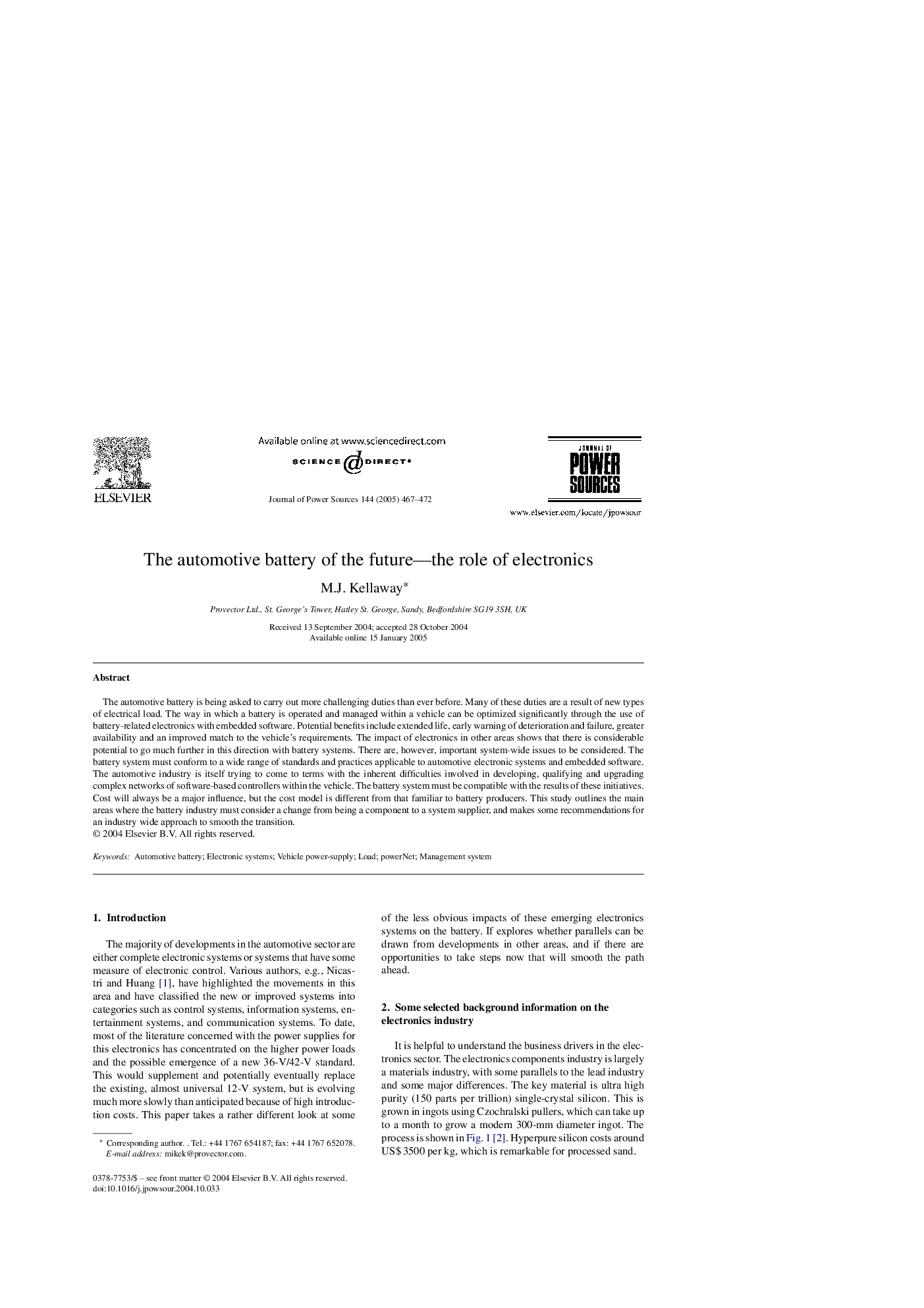| Article ID | Journal | Published Year | Pages | File Type |
|---|---|---|---|---|
| 10568074 | Journal of Power Sources | 2005 | 6 Pages |
Abstract
The automotive battery is being asked to carry out more challenging duties than ever before. Many of these duties are a result of new types of electrical load. The way in which a battery is operated and managed within a vehicle can be optimized significantly through the use of battery-related electronics with embedded software. Potential benefits include extended life, early warning of deterioration and failure, greater availability and an improved match to the vehicle's requirements. The impact of electronics in other areas shows that there is considerable potential to go much further in this direction with battery systems. There are, however, important system-wide issues to be considered. The battery system must conform to a wide range of standards and practices applicable to automotive electronic systems and embedded software. The automotive industry is itself trying to come to terms with the inherent difficulties involved in developing, qualifying and upgrading complex networks of software-based controllers within the vehicle. The battery system must be compatible with the results of these initiatives. Cost will always be a major influence, but the cost model is different from that familiar to battery producers. This study outlines the main areas where the battery industry must consider a change from being a component to a system supplier, and makes some recommendations for an industry wide approach to smooth the transition.
Related Topics
Physical Sciences and Engineering
Chemistry
Electrochemistry
Authors
M.J. Kellaway,
